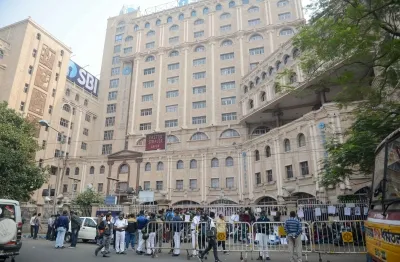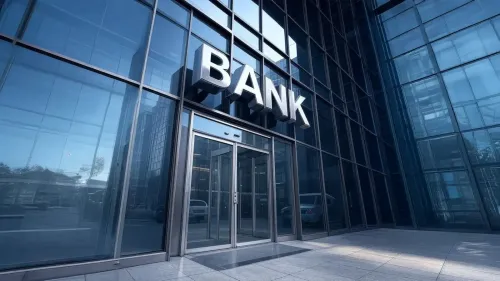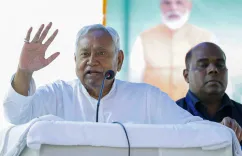How are India’s Public Sector Banks Thriving Amid US Tariffs While Private Lenders Struggle?

Synopsis
Key Takeaways
- Private sector banks faced market cap declines due to trade uncertainties.
- Public sector banks (PSBs) demonstrated growth, reflecting their resilience.
- SBI, the largest bank, saw a 10% increase in market cap.
- The government’s GST cuts aim to stimulate economic activity.
- The RBI has optimistic GDP projections for the fiscal year.
New Delhi, Oct 6 (NationPress) In the July–September quarter (Q2 FY26), private sector banks in India experienced a decline in market capitalisation, driven by trade uncertainties that dampened market sentiment, as highlighted by a recent report released on Monday. In contrast, public sector banks (PSBs) demonstrated remarkable resilience during this three-month period, showing positive growth against external challenges.
According to data from S&P Global Market Intelligence, HDFC Bank saw its market cap decrease by 4.8 percent in the third quarter, while ICICI Bank recorded a 6.7 percent drop.
Despite experiencing market cap gains in the April–June quarter, buoyed by rate cuts and high liquidity, both private lenders faced declines in the subsequent quarter.
Other private sector institutions, including Kotak Mahindra Bank Ltd. and Axis Bank Ltd., also reported decreases in market cap compared to the previous three months, according to the available data.
Among them, IndusInd Bank was the most adversely affected, losing 15.7 percent of its market cap and falling to 14th place. Earlier in 2025, the Mumbai-based bank had disclosed a series of accounting discrepancies.
Nevertheless, the top seven lenders in the Indian market retained their market cap rankings, as noted in the report.
State Bank of India (SBI), the largest bank in India by assets, increased its market cap by 10 percent in the third quarter. Among its public sector counterparts, Bank of Baroda saw a gain of 3.9 percent, while Punjab National Bank added 2.1 percent.
Bengaluru's Canara Bank witnessed an 8.3 percent rise, elevating its position to eighth among India’s largest lenders by market cap, moving up from tenth just three months prior. Indian Bank from Chennai posted the highest market cap increase of 16.7 percent in the third quarter among the top 20 Indian lenders.
The government recently reduced domestic Goods and Services Tax (GST) rates, anticipating an economic boost from the forthcoming festive demand and a standard rainy season that would bolster rural income.
The Reserve Bank of India (RBI) has also revised its GDP forecast for the current fiscal year ending in March 2026, increasing it to 6.8 percent from 6.5 percent. Although the central bank has kept its benchmark interest rates steady, many economists predict that further rate cuts may follow after two reductions in the first half of 2025.
According to June estimates from Visible Alpha, part of S&P Global Market Intelligence, it may take private sector lenders up to two years to recover their earnings following a series of lapses in their derivatives trades, which were intended to hedge foreign currency exposure and resulted in significant losses.









